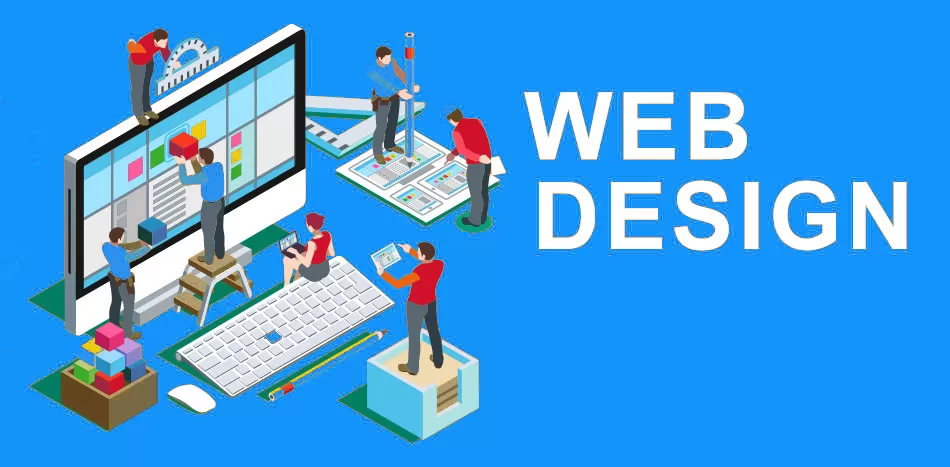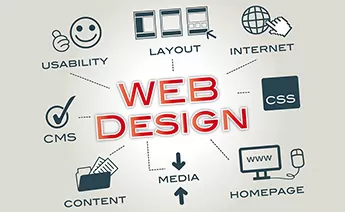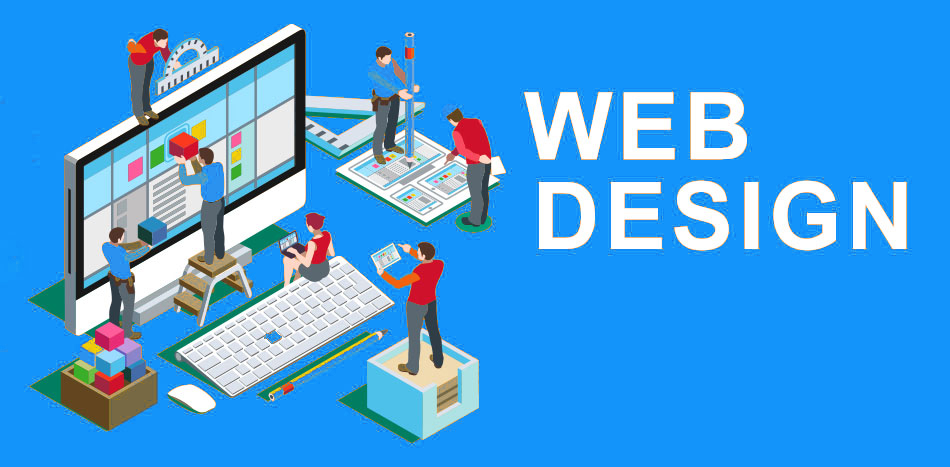Web design training for beginners
If you’re interested in learning web design as a beginner, there are several steps you can follow to get started. Here’s a suggested roadmap for your web design training:
Understand the Basics:
Familiarize yourself with HTML (Hypertext Markup Language) and CSS (Cascading Style Sheets). These are the fundamental building blocks of web design.
Learn how HTML tags structure web content and how CSS is used to style and format HTML elements.
Learn Responsive Design:
Study responsive web design principles, which involve creating websites that adapt and display properly on different devices and screen sizes.
Get acquainted with CSS frameworks like Bootstrap, which provide pre-built responsive design components and layouts.
Gain Design Skills:
Explore design principles, such as color theory, typography, and layout composition.
Learn about user experience (UX) design to understand how to create websites that are intuitive and user-friendly.
Practice with Projects:
Start building simple websites or web pages using the knowledge you’ve acquired.
Experiment with different design elements, layouts, and styles.
Consider developing personal projects or working on mock client briefs to gain practical experience.
Learn JavaScript:
Expand your skills by learning JavaScript, a programming language commonly used in web development.
JavaScript enables you to add interactivity and dynamic features to your websites, such as form validation and animations.
Explore Content Management Systems (CMS):
Familiarize yourself with popular CMS platforms like WordPress, Joomla, or Drupal.
Understand how to customize website templates, install plugins, and manage website content using CMS platforms.
Stay Updated and Continue Learning:
Web design and development are continually evolving fields. Stay up-to-date with the latest trends, technologies, and best practices.
Follow design and development blogs, join online communities, and consider attending workshops or webinars.
Remember, practice and hands-on experience are crucial for mastering web design. As you gain proficiency, you can explore more advanced topics like front-end frameworks (e.g., React, Angular), graphic design software (e.g., Adobe Photoshop, Illustrator), and other specialized areas based on your interests.
There are numerous online resources available, including tutorials, courses, and documentation, that can assist you in your web design journey. Take advantage of these resources and tailor your learning path to suit your goals and aspirations in web design.

What Qualifications Are Needed to Be a Web Designer?
Becoming a web designer typically doesn’t require specific formal qualifications or degrees. However, having the right skills and knowledge is essential to succeed in this field. Here are some qualifications and skills that are typically beneficial for web designers:
Technical Skills:
Proficiency in HTML, CSS, and JavaScript: These are the core technologies used in web design and development.
Familiarity with responsive design principles and frameworks like Bootstrap.
Knowledge of web design software and tools such as Adobe Photoshop, Illustrator, Sketch, or Figma.
Understanding of content management systems (CMS) like WordPress or Joomla.
Design Skills:
Strong understanding of design principles, including color theory, typography, layout composition, and visual hierarchy.
Knowledge of user experience (UX) design principles to create intuitive and user-friendly websites.
Ability to create visually appealing and aesthetically pleasing designs that align with client requirements and industry standards.
Portfolio:
Building a strong portfolio showcasing your web design projects is crucial. It demonstrates your skills, creativity, and ability to deliver high-quality designs.
Include a variety of projects that highlight different aspects of your expertise, such as responsive design, user interface (UI) design, and interactive features.
Communication and Collaboration:
Effective communication skills to understand client requirements, collaborate with team members, and present design ideas.
Ability to work collaboratively with clients, developers, and other stakeholders involved in the web design process.
Continuous Learning:
Web design is a constantly evolving field, so a willingness to learn and adapt to new technologies and design trends is important.
Stay updated with the latest web design techniques, tools, and industry best practices through self-learning, online courses, workshops, or professional development opportunities.
While formal qualifications may not be mandatory, earning a degree or diploma in web design, graphic design, or a related field can provide a solid foundation and enhance your credibility. Additionally, certifications from reputable organizations or institutions can demonstrate your expertise in specific areas of web design.
Ultimately, what matters most in the web design industry is your skills, portfolio, and ability to deliver high-quality designs that meet client needs. Continually improving your skills and staying current with industry trends will help you thrive as a web designer.

Free Online Web Design Video Courses
There are several online platforms that offer free web design video courses. Here are a few popular options:
FreeCodeCamp (www.freecodecamp.org): FreeCodeCamp offers a comprehensive curriculum that covers various aspects of web design and development. Their curriculum includes video tutorials, coding challenges, and projects to help you practice your skills.
MDN Web Docs (developer.mozilla.org): MDN Web Docs, provided by Mozilla, offers a wide range of tutorials and guides on web development, including HTML, CSS, and JavaScript. While not exclusively video-based, they provide detailed written content alongside code examples.
YouTube: YouTube is a rich resource for free web design video courses. Some popular channels that offer web design tutorials include Traversy Media, The Net Ninja, and DesignCourse.
W3Schools (www.w3schools.com): W3Schools is an online learning platform that provides free tutorials on web development technologies, including HTML, CSS, JavaScript, and more. While they don’t offer video courses, their tutorials are structured and include code examples that you can practice with.
Coursera (www.coursera.org): Coursera offers both free and paid courses on web design and development. While some courses on Coursera require payment, there are also free courses available that cover various aspects of web design. You can filter the courses by price to find the free options.
Udemy (www.udemy.com): Udemy is an online learning platform that offers a wide range of web design courses. While many courses on Udemy require payment, they also have a selection of free courses. You can search for “free web design courses” on Udemy to find the available options.
Remember to explore these platforms and browse through their course offerings to find the specific topics and teaching styles that suit your learning preferences. Additionally, don’t hesitate to explore other online learning platforms, blogs, and forums that may provide free web design resources and tutorials.
Are there any beginner-friendly web design courses on YouTube?
Yes, there are several beginner-friendly web design courses available on YouTube. Here are a few YouTube channels that offer beginner-friendly web design tutorials and courses:
Traversy Media:
Traversy Media, hosted by Brad Traversy, offers a wide range of web development and design tutorials. The channel covers HTML, CSS, JavaScript, responsive design, and various frameworks and libraries. The tutorials are beginner-friendly and provide step-by-step instructions.
The Net Ninja:
The Net Ninja, hosted by Shaun Pelling, offers a mix of web development and design tutorials. The channel covers HTML, CSS, JavaScript, responsive design, CSS frameworks, and more. The tutorials are well-structured and suitable for beginners.
DesignCourse:
DesignCourse, hosted by Gary Simon, focuses on web design, UI/UX design, and graphic design. The channel covers topics like Adobe XD, Photoshop, Illustrator, and web design principles. DesignCourse offers tutorials for beginners as well as more advanced design concepts.
LearnCode.academy:
LearnCode.academy, hosted by Will Stern, provides web development and design tutorials. The channel covers HTML, CSS, JavaScript, responsive design, CSS frameworks, and more. The tutorials are beginner-friendly and explain concepts in a clear and concise manner.
Kevin Powell: Kevin Powell’s channel offers tutorials on web design, CSS, and responsive design. The tutorials cover topics like CSS layout, flexbox, grid, and animation. Kevin’s videos are beginner-friendly and provide practical examples.
Make sure to explore these channels and browse through their playlists to find tutorials that suit your specific needs and learning style. It’s also a good idea to check the comments section and engagement on the videos to get an idea of the quality and helpfulness of the tutorials.

How long does it usually take to reach the average level?
The time it takes to reach an average level of proficiency in web design can vary depending on several factors, including:
Prior knowledge and experience:
If you already have some familiarity with basic web technologies like HTML and CSS, it may take less time to reach an average level. On the other hand, if you’re starting from scratch, it will likely take more time to grasp the concepts and gain proficiency.
Learning approach and dedication:
Consistency and dedication in learning web design concepts and practicing your skills will significantly impact the time it takes to reach an average level. Regular practice and a structured learning approach can expedite your progress.
Complexity of projects and technologies:
The complexity of the projects you work on and the technologies you choose to learn can influence the time required. More complex projects and advanced technologies may require additional learning time.
Given these variables, it’s challenging to provide an exact timeframe. However, with consistent effort, focused learning, and practice, it’s possible to reach an average level of proficiency in web design within a few months. This assumes that you’re dedicating a significant amount of time each week to learning and practicing. It’s important to note that proficiency is a continuous journey, and there is always room for growth and improvement even after reaching an average level.
Remember, web design is a broad field, and the time it takes to become highly skilled or specialized in specific areas can vary considerably. Ongoing learning, staying updated with industry trends, and gaining practical experience through real-world projects will continue to enhance your skills beyond the average level.
